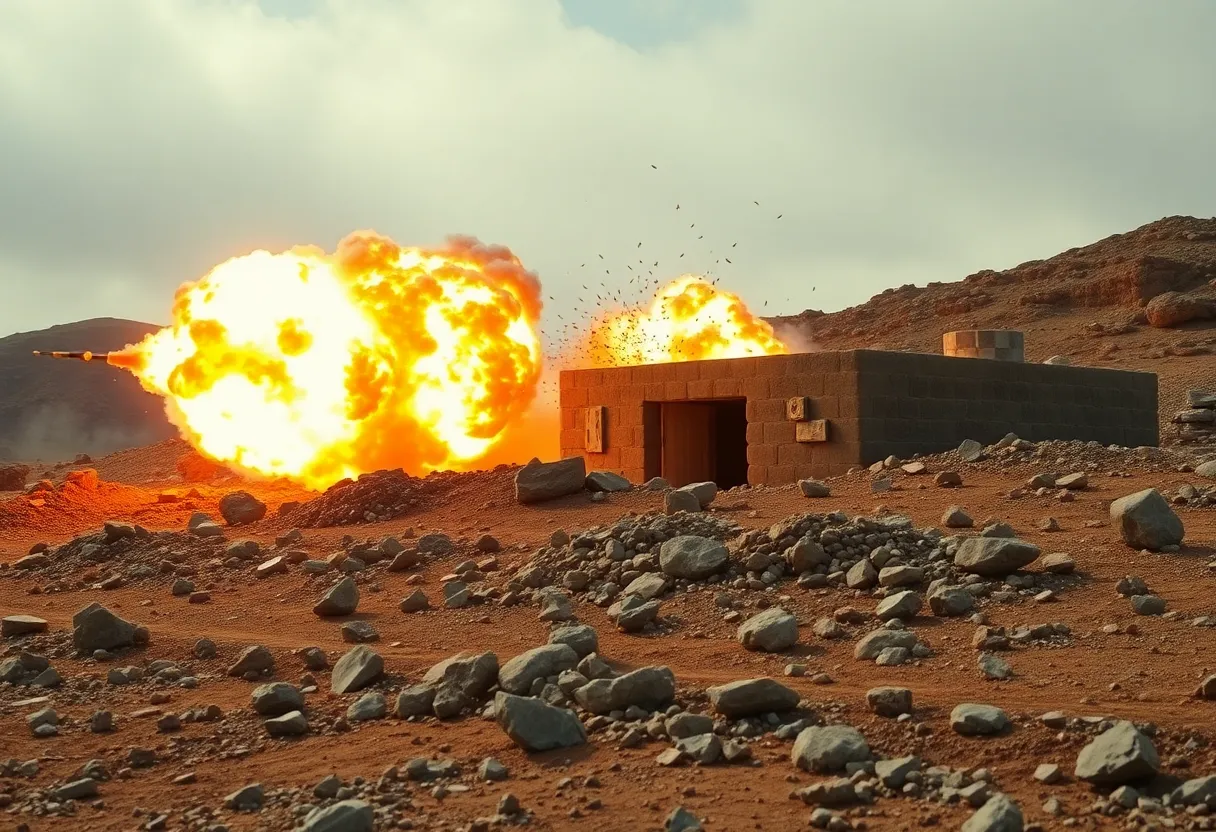News Summary
The GBU-57/B Massive Ordnance Penetrator, a 30,000-pound bunker buster, plays a crucial role in military strategy regarding Iran’s fortified Fordo nuclear facility. With its capabilities, this bomb poses significant implications for U.S.-Israel collaboration and international security. The complexities surrounding its use raise concerns about potential nuclear fallout and highlight the challenges of military operations against heavily fortified targets.
Understanding the U.S. Military’s Bunker Buster Bomb and its Role in Nuclear Strategy
Ever heard of a bunker buster? It’s a term that’s been buzzing around military circles lately, particularly when folks start talking about Iran’s Fordo nuclear facility. For those out of the loop, Fordo is not just any nuclear site; it’s one of Iran’s most heavily fortified installations, snugly tucked away deep inside a mountain beyond layers of rock and soil. This makes any potential attack a real challenge.
What Makes Fordo So Important?
Fordo is reportedly home to nearly 3,000 sophisticated centrifuges spread across two enrichment halls. This advanced technology is crucial for nuclear material production, and it’s certainly not easy to get to with your average military strike. The facility is approximately 80 meters (that’s about 260 feet) beneath the surface, and it’s protected by Iranian and Russian missile systems, making it a tough nut to crack.
Meet the GBU-57/B Massive Ordnance Penetrator
Enter the GBU-57/B Massive Ordnance Penetrator, affectionately known as the MOP. This massive bomb weighs in at a whopping 30,000 pounds and is specifically designed to take on challenges like Fordo. Thanks to its thick steel casing, it can burrow through rock, soil, and concrete before detonating, making it a potent option for engaging hardened targets.
But here’s the catch—only the B-2 Spirit stealth bomber has the capability to carry this bomb. The B-2 can transport a total payload of up to 40,000 pounds, so it can take on two GBU-57/B bombs in one go, which is quite a feat. However, this limitation puts a dent in operational plans for any potential strikes.
The Role of Israel in the Scenario
Moving beyond the technical specifications of the bomb, it’s clear that any operation against Fordo would require significant collaboration. Israeli military officials signal that they might not possess the capability to take down such a fortified facility without the assistance of the U.S. Given its size and the complexity of launching such an attack, the GBU-57/B is considered a game-changer.
Unlike the U.S., which has been developing potent bunker busters like the GBU-57/B since the early 2000s, Israel has mainly relied on fighter jets and hasn’t transitioned to heavier bombers that can deliver these massive ordnance devices. While they have their own military strategies—focusing on more accessible options like targeting power generation facilities linked to Fordo—there’s no denying that such an undertaking lacks the firepower that only a bomb like the MOP can provide.
The Potential Consequences
Let’s take a moment to consider what would happen if the GBU-57/B were to be used on Fordo. The bomb is designed to penetrate about 200 feet below the surface before making its mark, potentially halting nuclear material production. However, there are concerns about what could happen if any nuclear material were released during an operation. The international community is understandably anxious about the fallout, both in the literal and figurative sense.
As of now, the GBU-57/B remains untested in combat, and only a small number of these bombs are in U.S. stockpiles, raising questions about their availability for any future operations. Even with Israel’s repeated calls for military support, the U.S. has so far not supplied them with GBU-57/B bombs or B-2 bombers.
A Complex International Dynamic
The Israeli ambassador to the U.S. recently highlighted their defensive strategy, asserting that, while they have plans for addressing the Fordo facility, they see the U.S. as a crucial ally in any strikes. Israeli Prime Minister views the removal of Fordo as a key piece in dismantling what he sees as an existential threat posed by Iran’s nuclear intentions.
So, as discussions continue around military strategies and potential actions concerning Iran’s Fordo nuclear site, the GBU-57/B stands out not just for its capacity to penetrate deep structures but also for what it represents—a critical piece of urgency in ongoing international security discussions.
Deeper Dive: News & Info About This Topic
- The New York Times
- The Times of Israel
- Scientific American
- Wikipedia: Bunker Buster
- Encyclopedia Britannica: Bunker Buster

Author: STAFF HERE PETERSBURG WRITER
The ST PETERSBURG STAFF WRITER represents the experienced team at HEREStPetersburg.com, your go-to source for actionable local news and information in St Petersburg, Pinellas County, and beyond. Specializing in "news you can use," we cover essential topics like product reviews for personal and business needs, local business directories, politics, real estate trends, neighborhood insights, and state news affecting the area—with deep expertise drawn from years of dedicated reporting and strong community input, including local press releases and business updates. We deliver top reporting on high-value events such as Grand Prix of St. Petersburg, Localtopia, and SHINE Mural Festival. Our coverage extends to key organizations like the St. Petersburg Area Chamber of Commerce and St. Pete Downtown Partnership, plus leading businesses in finance, manufacturing, and healthcare that power the local economy such as Raymond James Financial, Jabil, and Bayfront Health St. Petersburg. As part of the broader HERE network, including HEREJacksonville.com, HEREOrlando.com, HERETallahassee.com, and HERETampa.com, we provide comprehensive, credible insights into Florida's dynamic landscape.





